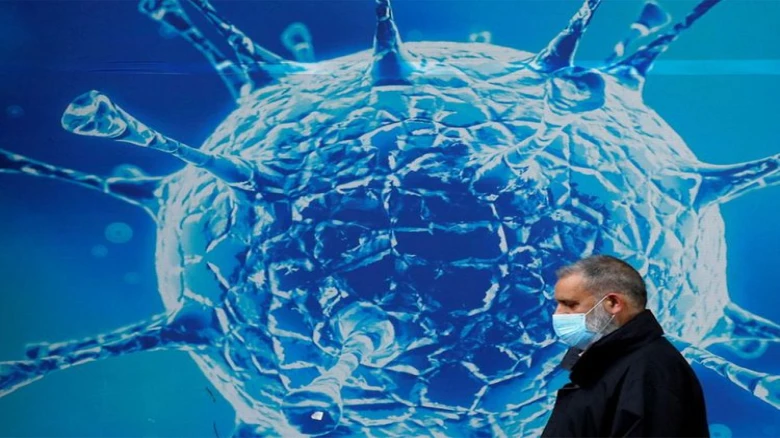Regional

The lab predicted that, in relation to the most recent vaccinations, BA.2.75 would have an antibody-espace similar to that of BA.4 and BA.5.
Digital Desk: A new Omicron subvariant has been reported in around ten Indian states. An Israeli specialist stated that the subvariant, known as BA.2.75, maybe "alarming" in nature.
However, the Indian health ministry has not yet confirmed the identification of the subvariant in the country. In a series of tweets, Dr. Shay Fleishon of the Central Virology Laboratory at the Sheba Medical Center in Tel Hashomer stated that 85 sequences of BA.2.75 have so far been collected, primarily from 10 states in India and seven other countries. he added that no transmission has yet been traced using sequences from outside of India.
Fleishon published a table demonstrating the cases' geographic distribution. One instance of the novel subvariant was discovered in Delhi. With respect to the number of cases, the states of Haryana, Himachal Pradesh, Jammu and Kashmir, Karnataka, Madhya Pradesh, Maharashtra, Telangana, Uttar Pradesh, and West Bengal had six, three, one, ten, five, twenty-seven, two, one, and thirteen cases, respectively.
On the other hand, Japan, Germany, the United Kingdom, Canada, the United States, Australia, and New Zealand, have one, two, six, two, two, one, and two cases of new subvariant, respectively.
Further, Fleishon added that it is "too soon" to predict if BA.2.75 will become the next dominant variant. However, he considers BA.2.75 to be "alarming" because it might indicate a future trend.
Additionally, he stated that second generation variations based on the B.1.1.529 lineages, such as BA.1, BA.2, BA.3, BA.4, and BA.5, have been increasingly popular in recent months.
These second-generation variants were derived from Omicron lineages with mutations in the RBD of the S1 region of the spike protein. The region of the SARS-CoV-2 spike protein known as the receptor-binding domain, or RBD, is where the virus binds to host cells.
Fleishon highlighted that second-generation variants of other variants of concern had not shown a rise in these subvariants at the same rate.
He called the inter-host success of such a divergent second-generation variety "alarming," implying that even if BA.2.75 succeeds, other second-generation variants may improve over time.
On Twitter, Tom Peacock, a virologist at the Imperial Department of Infectious Diseases in London, stated that it is essential to maintain a "tight check" on BA.2.75. He explained that the new type includes many spike mutations and is spreading swiftly and broadly across geographical regions.
Bloom Lab, a Seattle-based lab affiliated with the Fred Hutch research centre in the United States, said in a tweet last week that the subvariant identified by Tom Peacock is "worth tracking" because it has considerable antigenic alteration relative to its parent BA.2. The lab identifies G446S and R493Q as the two essential alterations.
The lab noted on Twitter that G446S is at one of the most effective points of antibody escape from the current vaccinations' ability to neutralize BA.2. It also mentioned that adding G446S to BA.2 will lessen neutralization for early infections or vaccine-induced immunity.
The lab also stated that G446S would have less impact on the antibodies of individuals who have already experienced a BA.1 breakthrough infection. The antigenic advantage of BA.2.75 over BA.2 will be most significant among those not exposed to BA.1, according to the lab.
According to health experts, the Omicron subvariants BA.4 and BA.5, which are more contagious than earlier strains and are more likely to evade antibodies from vaccines and prior infections, may soon overtake other strains as the predominant ones in Europe and the US. Numerous nations worldwide have reported the presence of these strains, which were discovered for the first time by experts in South Africa in April. Due to their ability to spread more quickly than other circulating variants, especially BA.2, the subvariants are on the rise globally.
According to tweets from Bloom Lab, BA.4 and BA.5 exhibit a three-fold decrease in neutralization when compared to BA.2. The antibody-escape calculator for the lab predicts that in individuals without BA.1 breakthrough infection, BA.2.75, will have a decline in neutralization equivalent to that for BA.4 and BA.5, but less of a drop in individuals with a prior BA.1 infection.
This is because BA.4 and BA.5 have the F486V mutation, which allows antibodies to evade both the current vaccine and the BA.1 breakthrough. But, F486V is absent in BA.2.75, but G446S is present, which is immune to existing vaccinations' antibodies. The antibody escape is less common in persons who have already experienced a BA.1 breakthrough infection.
As per Bloom Lab, R493Q, which is present in BA.2.75 as well as BA.4 and BA.5, has an evolutionary function. Although R493Q is not a significant antigenic alteration, it allows for the F486V and G446S mutations in BA.4 and BA.5, respectively.
R493Q makes the virus more compatible with ACE2, the receptor for SARS-CoV-2 viral entry.
The lab predicted that, in relation to the most recent vaccinations, BA.2.75 would have an antibody-espace similar to that of BA.4 and BA.5.
Leave A Comment